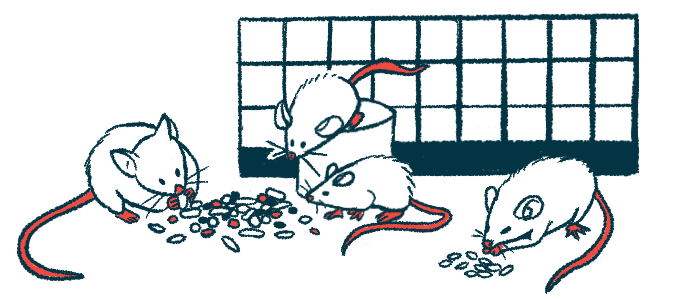Signaling Molecule CXCL7 Promotes Inflammation in NMOSD in Mice
Scientists: Inflammatory pathways may be linked to treatment strategies

A signaling molecule called CXCL7 drives inflammation and nerve fiber damage in a mouse model of neuromyelitis optica spectrum disorder (NMOSD), a new study reports.
The findings show that this signaling molecule “is a key factor in the formation of lesions in the brain, spinal cord, and retina,” the scientists wrote.
Future studies of these disease-driving inflammatory pathways could uncover new treatment strategies for NMOSD, according to the team, who called CXCL7 “a target worthy of further discussion.”
The study, “CXCL7 aggravates the pathological manifestations of neuromyelitis optica spectrum disorder by enhancing the inflammatory infiltration of neutrophils, macrophages and microglia,” was published in the journal Clinical Immunology.
CXCL7 works in the body to coordinate the movement of certain immune cells, most notably neutrophils. In prior studies, scientists had found that, in people with NMOSD, levels of CXCL7 are increased in the cerebrospinal fluid — the liquid surrounding brain and spinal cord — during acute attacks, as compared with patients with diseases such as multiple sclerosis.
Now, researchers in China and the U.S. tested the effects of CXCL7 in mouse models of NMOSD, induced via injection with antibodies against AQP4, a water channel protein. These self-targeting antibodies are the most common cause of NMOSD.
Three models were used, with antibodies injected into the brain, spinal cord, or eye.
All of the mice were given injections of CXCL7, with some animals also given a viral vector with a genetic construct designed to reduce CXCL7 levels.
Across models, results generally showed that increasing CXCL7 levels led to a greater reduction of AQP4 protein expression or activity, whereas reducing CXCL7 rescued the expression of this protein.
Increased CXCL7 led to greater numbers of neutrophils and a related immune cell called macrophages in the models. It also increased activation of brain-residing inflammatory cells called microglia. Consistently, lowering levels of CXCL7 led to reduced activity in these immune cells.
In models where anti-AQP4 antibodies were injected into the brain, increasing CXCL7 led to more myelin damage, and decreasing CXCL7 reduced myelin damage. Myelin is a fatty wrapping around nerve fibers that helps them send electrical signals.
However, in the model where the disease-driving antibody was injected into the spine, lowering CXCL7 levels had no significant effect on myelin damage. The researchers speculated that this difference may be due to discrepancies in antibody concentration between the two models.
“Our results indicate that CXCL7 is involved in AQP4 loss, demyelination [myelin loss], inflammatory injury and other pathological [disease-related] processes,” the researchers concluded.
The scientists also reported on follow-up measures for 13 NMOSD patients who had been involved in the original study that identified high CXCL7 in the cerebrospinal fluid during acute attacks. Results indicated that levels of this signaling molecule dropped substantially after the acute attack had resolved.
The investigators called for further study to investigate the biological mechanisms by which CXCL7 is involved in NMOSD, speculating that better understanding these mechanisms could uncover new strategies for treating the inflammatory neurological disorder.







